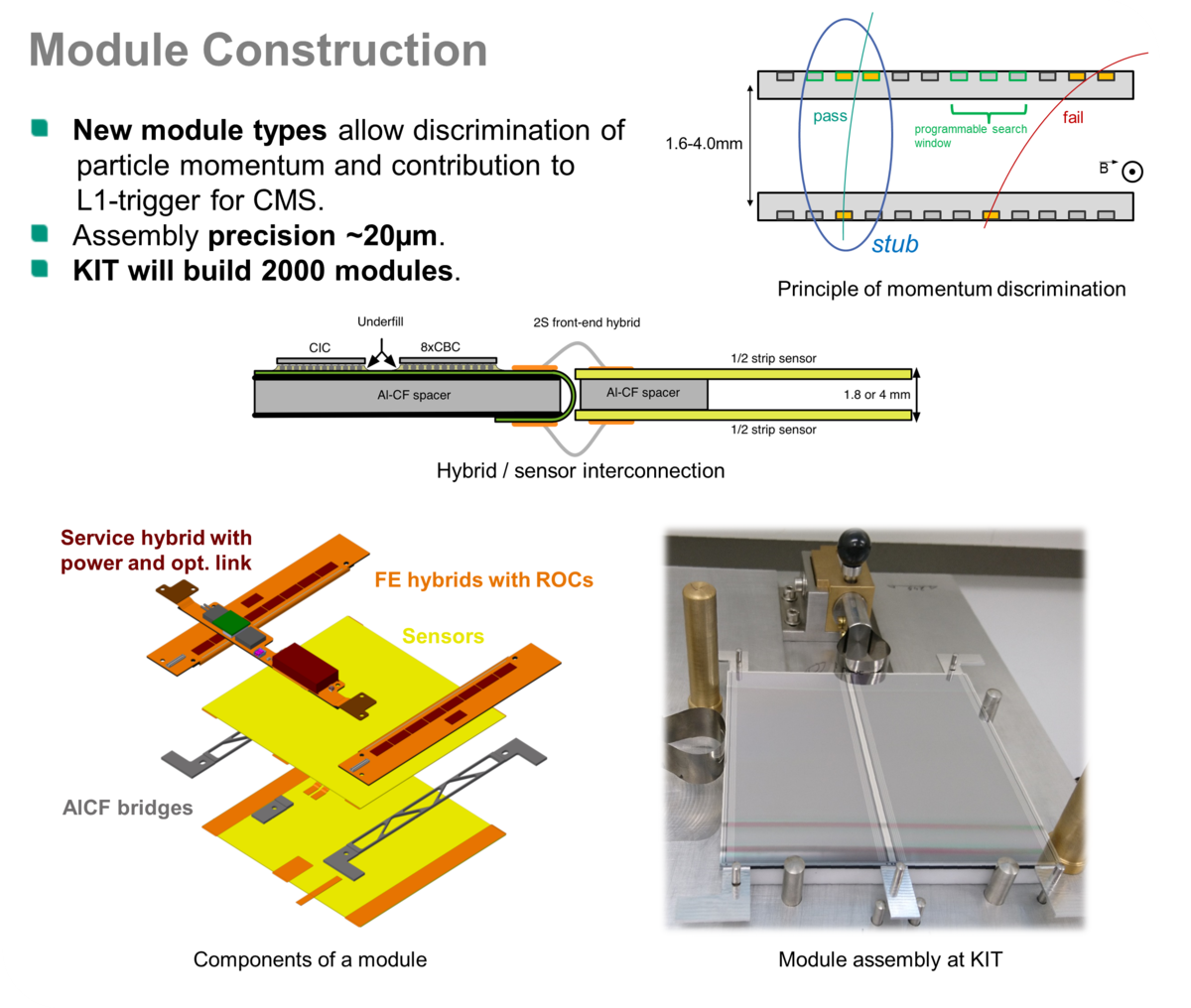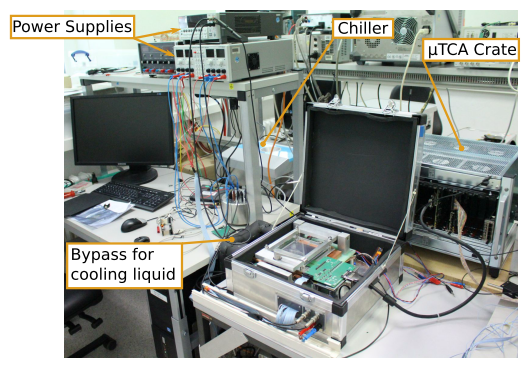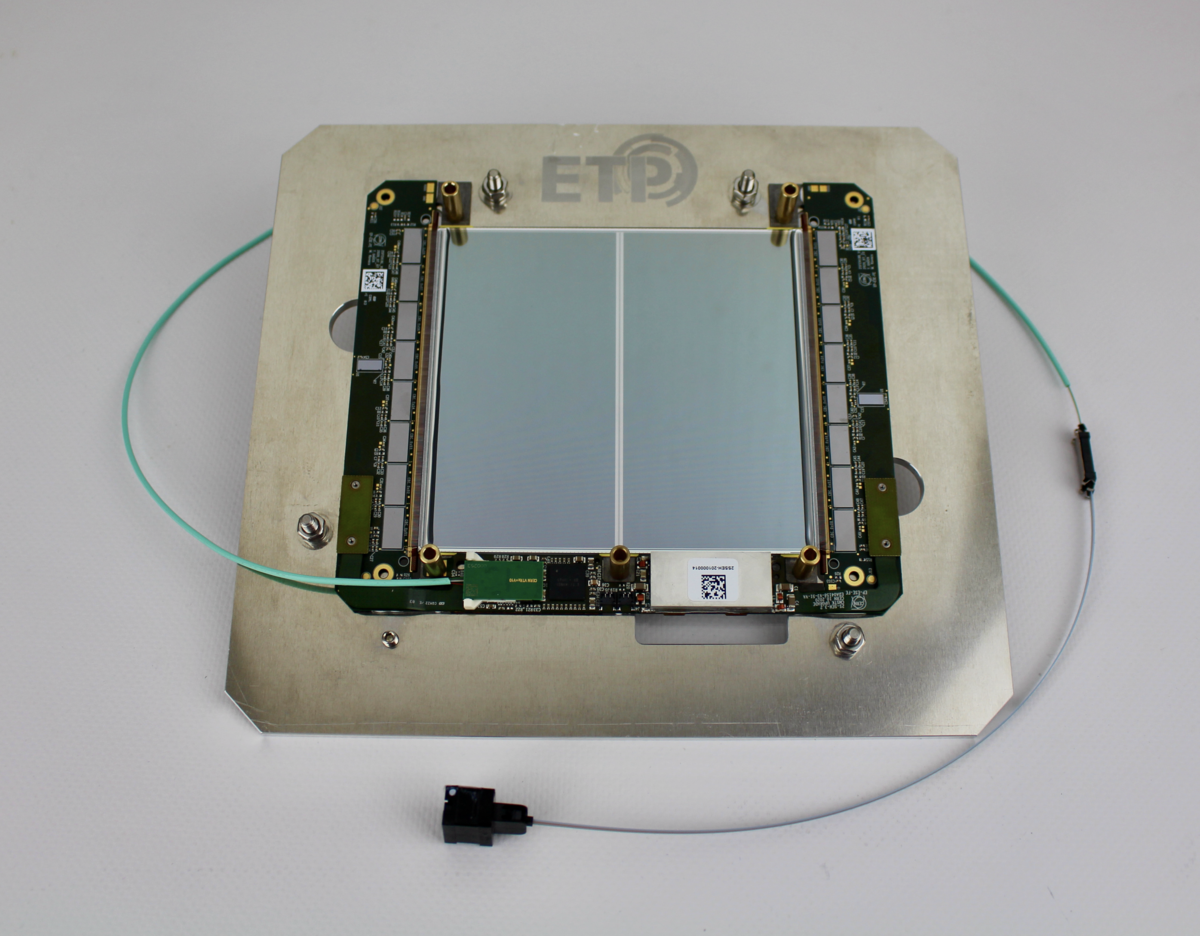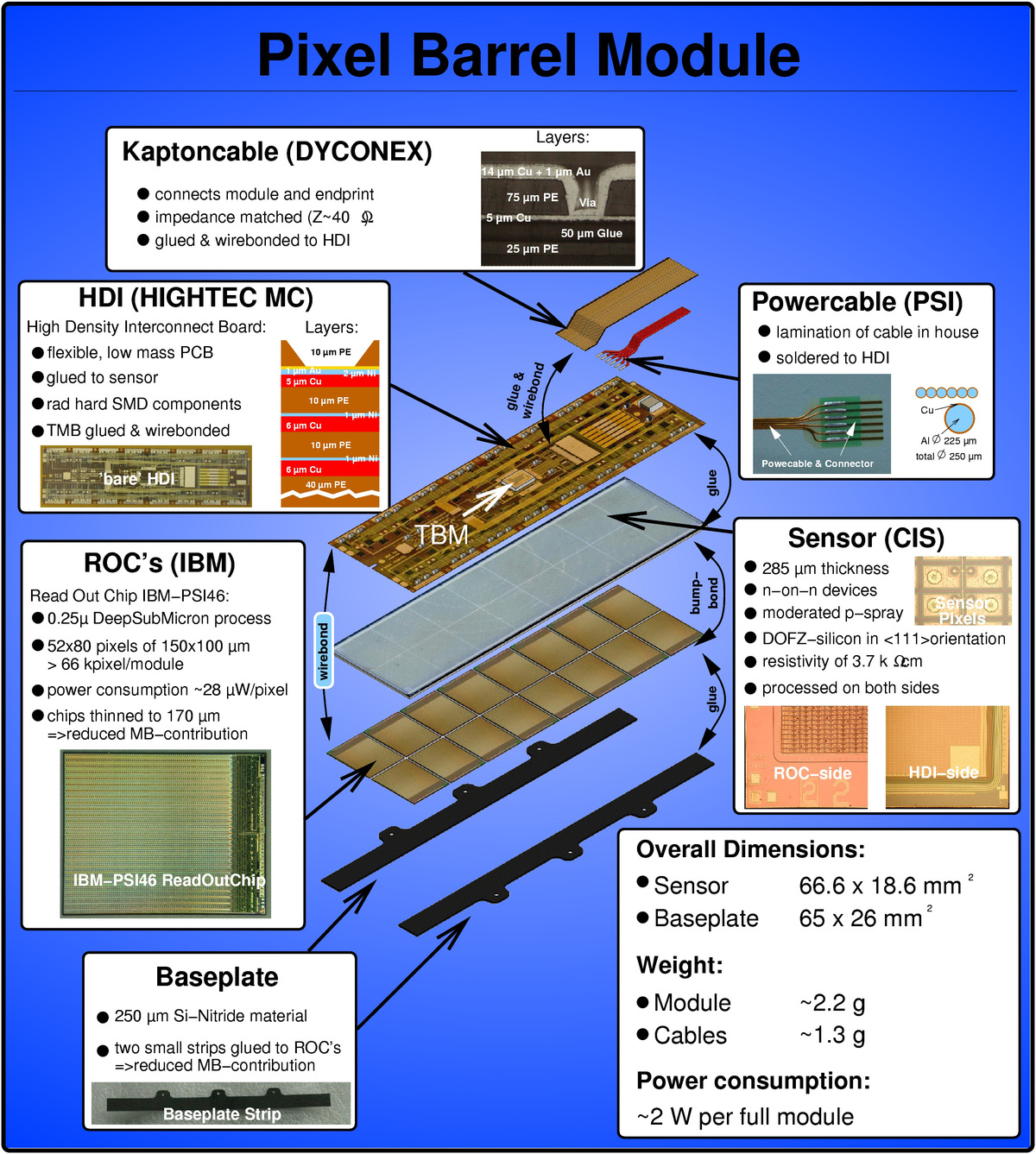Upgrade of the CMS Tracking Detectors
The LHC accelerator and experiments will be operated well beyond 2035. For the CMS tracking detectors a two-phase upgrade is planned to ensure the best possible detector performance. Scientists from ETP contribute significantly to the replacement of the silicon pixel detector in the first phase and to the replacement of the entire tracking detector in the second phase (high luminosity phase, HL-LHC).
Phase 2: Entire Track Detector
As part of the Phase-2 Upgrade of the CMS experiment, the complete tracking detector will be replaced by 2026.
With the construction of 2000 silicon detector modules, the ETP is making a significant contribution to this new tracking detector. The preparations for this production include contributions in the development of the construction procedures as well as the associated precision tools.
In addition, test systems are being developed at the ETP that check the functionality of the detector modules and associated components both in the prototype phase and in series production. The ETP has several test systems to check the signal efficiency at the highest readout rates and the foreseen operating temperature of -20°C.
Phase 1: Silicon Pixel Detector
The silicon pixel detector of the CMS experiment has been replaced by a newly developed pixel detector in early 2017. The new detector allows more precise reconstruction of the trajectories of particles produced in the LHC collisions. Upgrades of the readout electronics enable clean separation of collision events at increased luminosities.
The new pixel detector has been built in a international collaboration. The list of German institutions includes KIT, RWTH Aachen, the University of Hamburg, and DESY. These institutions have shared production and testing of the new fourth detector layer in the central ("barrel") part of the detector. Between 2015 and 2016, ETP has produced about 400 modules for the new pixel detector, in close collaboration with the KIT Institute for Data Processing and Electronics. The new pixel detector has been commissioned in spring 2017 and is currently taking data.





